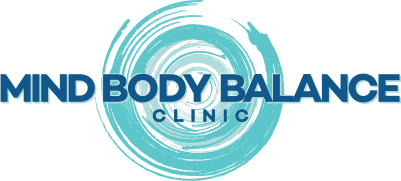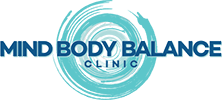
Understanding Cervical and Lumbar Spinal Stenosis
Chronic back pain can be a daily struggle. For some, this persistent discomfort stems from a medical condition known as spinal stenosis, which affects the cervical and lumbar regions of the spine.
If you’re one of the many patients searching for answers, this guide will help you understand spinal stenosis, its causes, symptoms, and why chiropractic care and functional medicine can be effective treatment approaches. By the end of this post, you’ll have clearer knowledge about how you can regain control over your mobility and pain.
What Is Spinal Stenosis?
Spinal stenosis is a medical condition characterized by the narrowing of spaces within the spine. This constriction places pressure on the spinal cord and nerves, leading to pain, numbness, and reduced mobility. Spinal stenosis typically occurs in two key areas of the spine:
- Cervical Spine (neck): Affects the nerves in the neck and can result in symptoms that radiate to the shoulders, arms, and fingers.
- Lumbar Spine (lower back): This is the most common type, causing pain or weakness that often radiates down the legs.
Common Causes of Spinal Stenosis
Understanding what causes spinal stenosis is essential in managing and mitigating its symptoms.
- Age-Related Wear and Tear: Degenerative changes, such as arthritis, can lead to the narrowing of the spinal canal.
- Herniated Discs: Bulging or ruptured discs can place pressure on spinal nerves.
- Bone Spurs: Growth associated with osteoarthritis can contribute to the reduction of spinal space.
- Thickened Ligaments: Ligaments in the spine may thicken and stiffen over time, compressing the spinal cord.
- Genetics: Some individuals are born with a smaller spinal canal, making them more susceptible to developing symptoms.
Symptoms to Watch For
Symptoms of spinal stenosis can vary between the cervical and lumbar regions but often share common signs of nerve compression.
Cervical Spinal Stenosis Symptoms:
- Tingling or numbness in the arms, hands, and fingers
- Neck pain
- Difficulty with fine motor skills (e.g., buttoning a shirt)
- Arm weakness
Lumbar Spinal Stenosis Symptoms:
- Lower back pain
- Weakness or numbness in the legs or feet
- Sciatica (radiating pain down one or both legs)
- Difficulty walking or balancing
If you’ve experienced any of these symptoms, it’s important to seek professional evaluation, as untreated spinal stenosis can lead to further complications.
How Chiropractic Care Can Help
Many individuals begin their spinal stenosis treatment journeys with chiropractic care, which provides a non-invasive, drug-free approach to managing pain and improving spinal function.
- Spinal Adjustments
Chiropractic spinal adjustments can help reduce pressure on the spinal cord and surrounding nerves. These adjustments realign the spine to restore natural curvature and increase flexibility, alleviating pressure points where narrowing occurs.
- Decompression Techniques
Spinal decompression therapy is an advanced chiropractic treatment that stretches the spine gently. This technique aims to relieve compression on bulging discs and nerves, creating space within the spinal canal.
- Improved Posture and Alignment
Many spinal stenosis issues are aggravated by poor posture. Chiropractic care addresses posture-related misalignments, helping to reduce strain on your spine and prevent further narrowing.
- Customized Exercise Plans
Chiropractors may provide targeted exercises to strengthen the muscles surrounding the spine, enhance flexibility, and support recovery. These routines can relieve tension and improve patient mobility.
Incorporating Functional Medicine for Holistic Care
Functional medicine complements chiropractic care by addressing the root causes of spinal stenosis and providing a personalized approach to management.
- Dietary Adjustments
Certain foods can trigger inflammation, exacerbating back pain. A functional medicine practitioner can recommend an anti-inflammatory diet rich in omega-3 fatty acids, antioxidants, and essential nutrients.
- Nutritional Supplements
Patients often benefit from supplements including magnesium (for muscle health) and turmeric (a natural anti-inflammatory). These can reduce pain and improve overall spinal health.
- Stress Management
Chronic stress can aggravate pain sensitivity. Mindfulness practices such as meditation and yoga are increasingly recommended as part of a functional approach to managing spinal stenosis.
- Identifying Underlying Conditions
Functional medicine also investigates underlying or coexisting conditions—such as autoimmune diseases or metabolic imbalances—that may contribute to your symptoms. Treating these conditions can enhance overall recovery.
What Results Can You Expect?
Both chiropractic care and functional medicine have been shown to provide significant relief for spinal stenosis patients. While each person is unique, potential benefits include:
- Reduced pain and nerve compression.
- Improved mobility and spinal alignment.
- Greater energy levels and reduced inflammation.
- A more sustainable, non-invasive approach to managing symptoms.
However, the best approach combines consistency with a personalized care plan adapted to meet your specific needs.
When to Seek Professional Help
If your symptoms persist or worsen—despite attempts to manage them at home—it’s crucial to consult a healthcare professional. Persistent tingling, weakness, or difficulty walking may indicate nerve damage that requires immediate attention.
Start Your Treatment Journey Today
Spinal stenosis can feel like an uphill battle, but you’re not alone. With chiropractic care and functional medicine, relief and recovery are within reach.
Dr. Quintana specializes in creating personalized treatment plans tailored to your unique needs. Whether it’s spinal adjustments, decompression therapy, or functional medicine solutions, we’re here to help you regain control of your life—pain-free.
Schedule your consultation today and take the first step toward a healthier spine.
GENERAL ENQUIRIES
OFFICE HOURS
| Monday | Closed |
| Tuesday | 9am – 6pm |
| Wednesday | Closed |
| Thursday | 9am – 6pm |
| Friday | 9am – 1pm |
| Saturday | 9am – 1pm |
Social Media Outlets
Request Appointment
Please fill out the form below.


